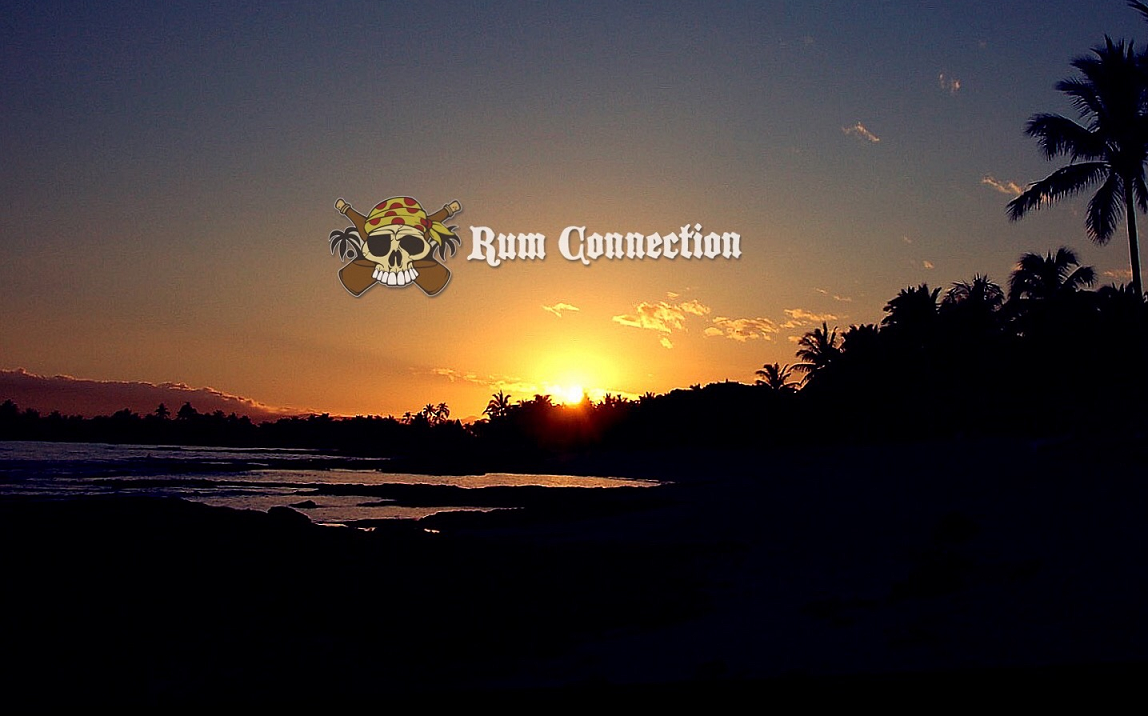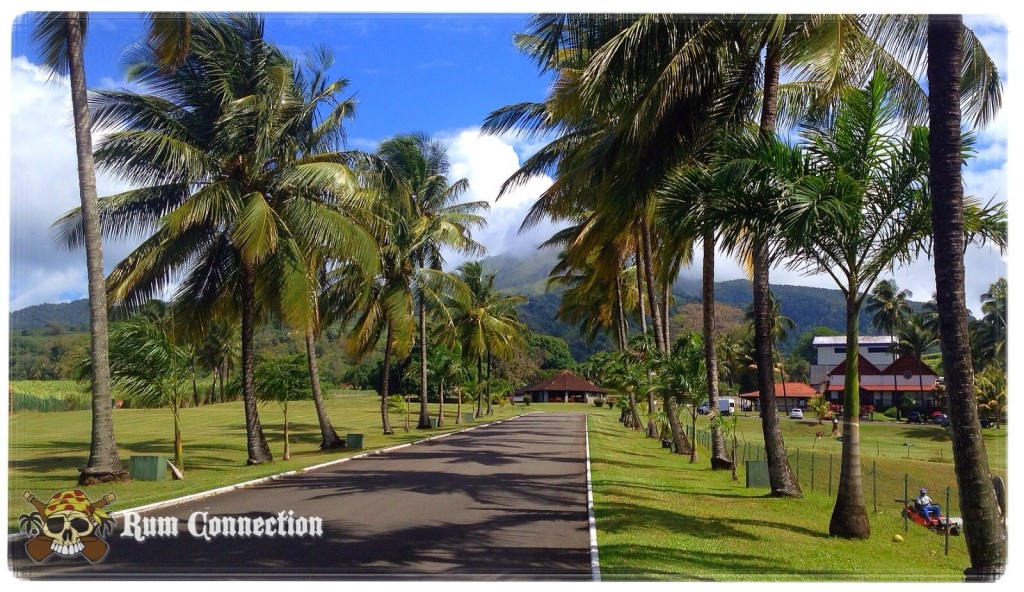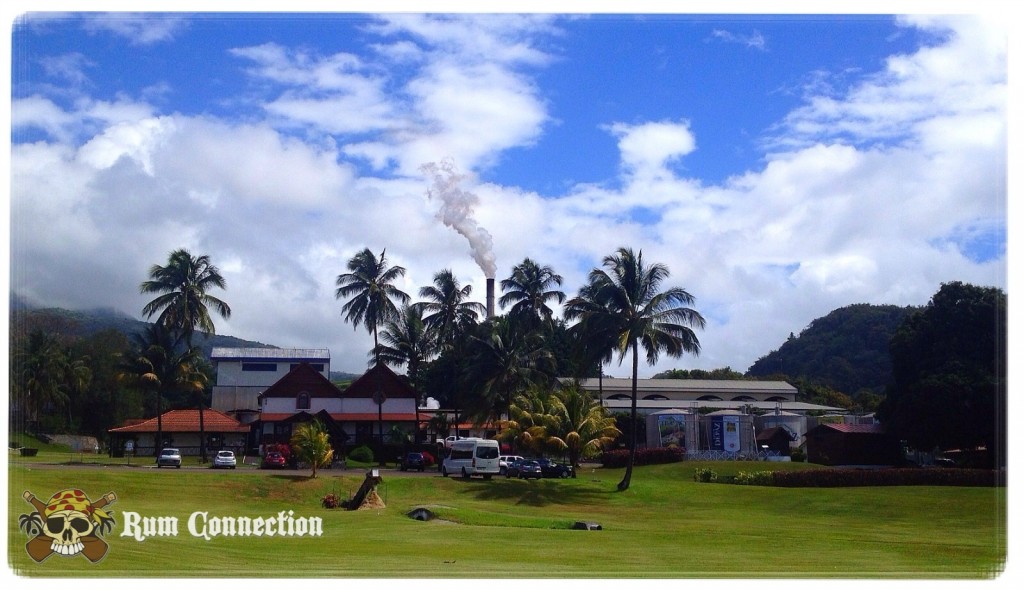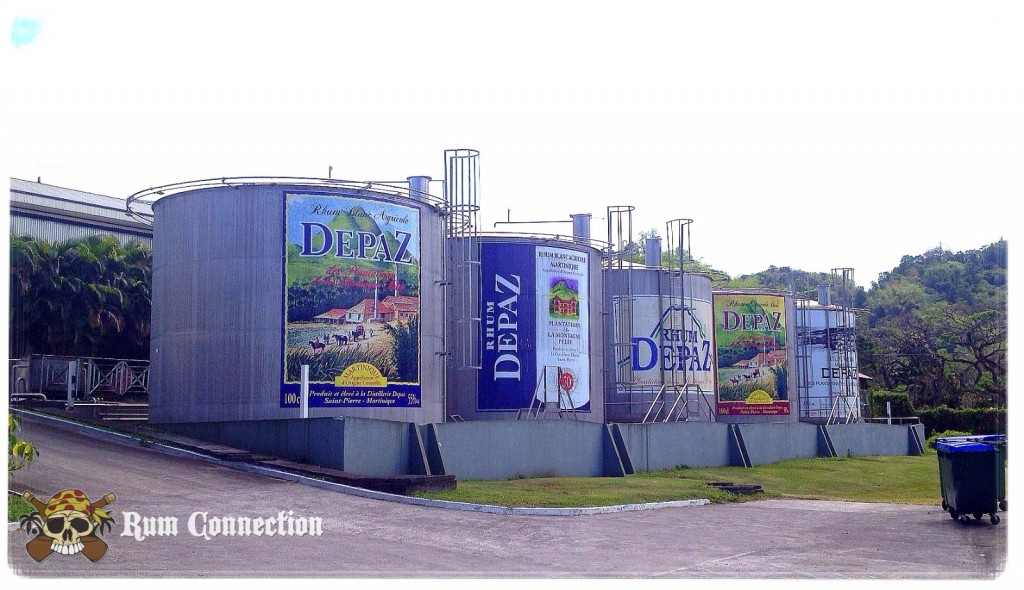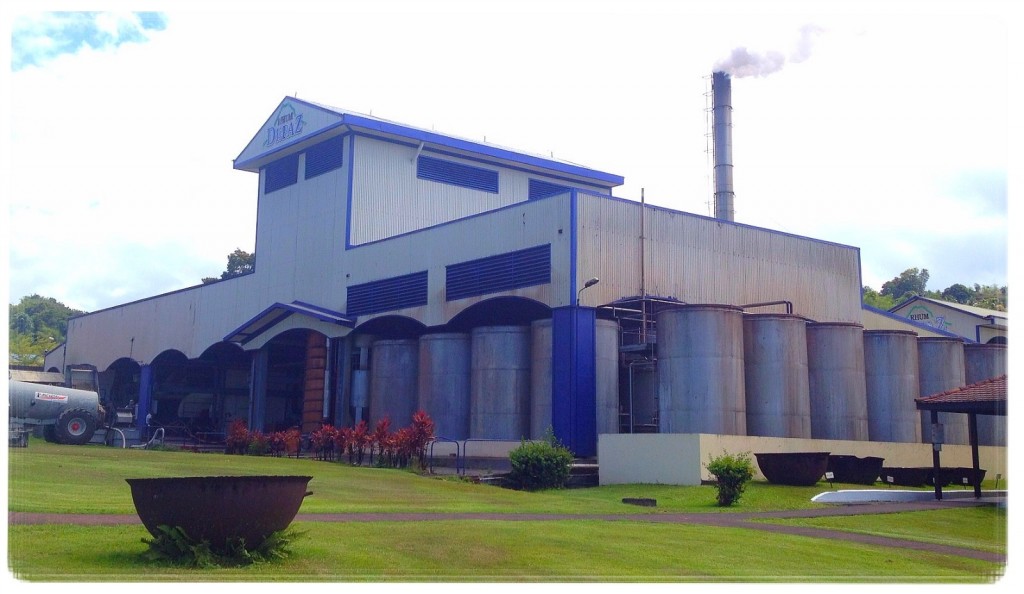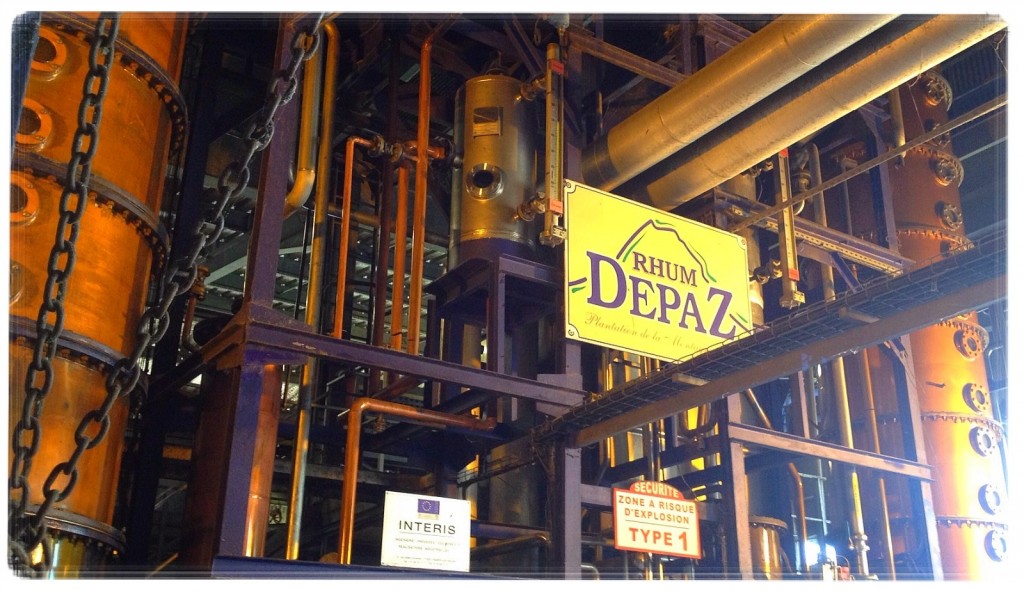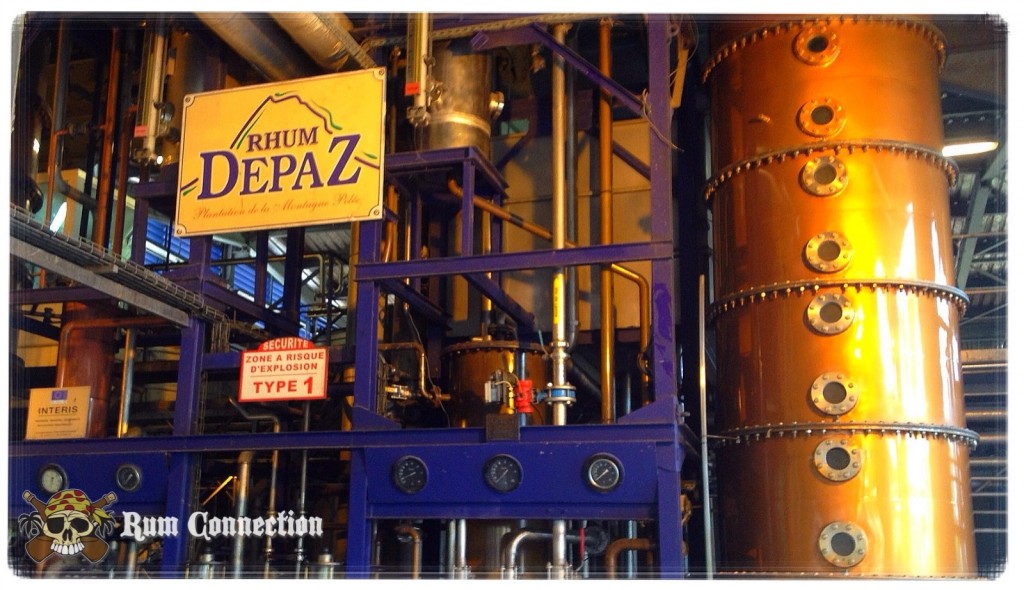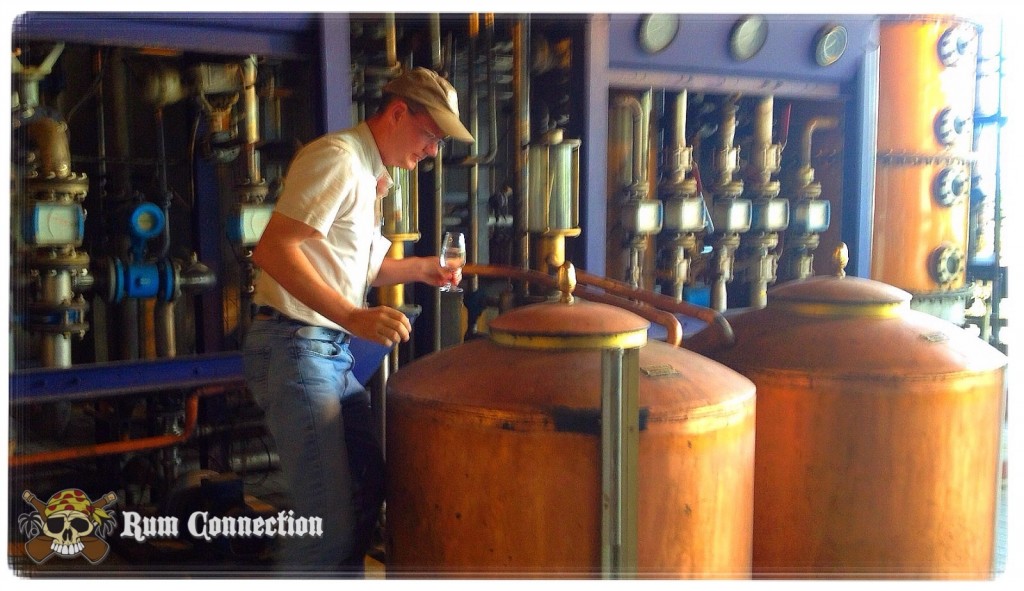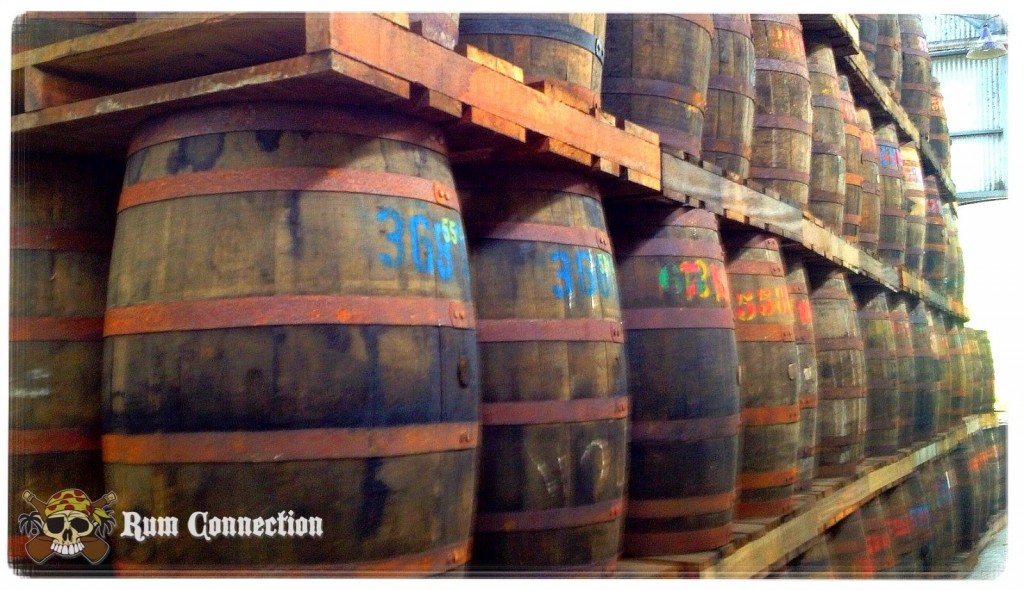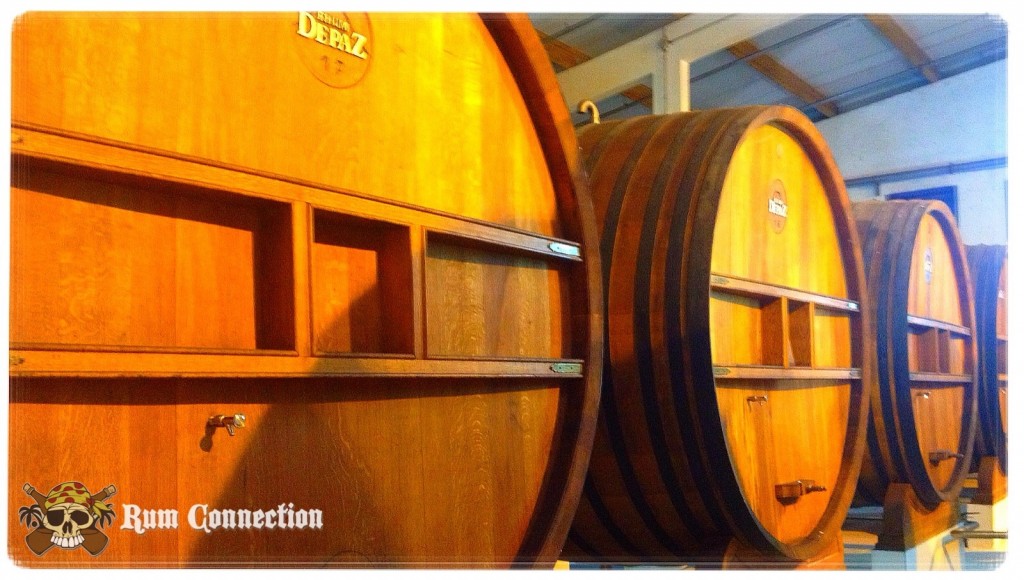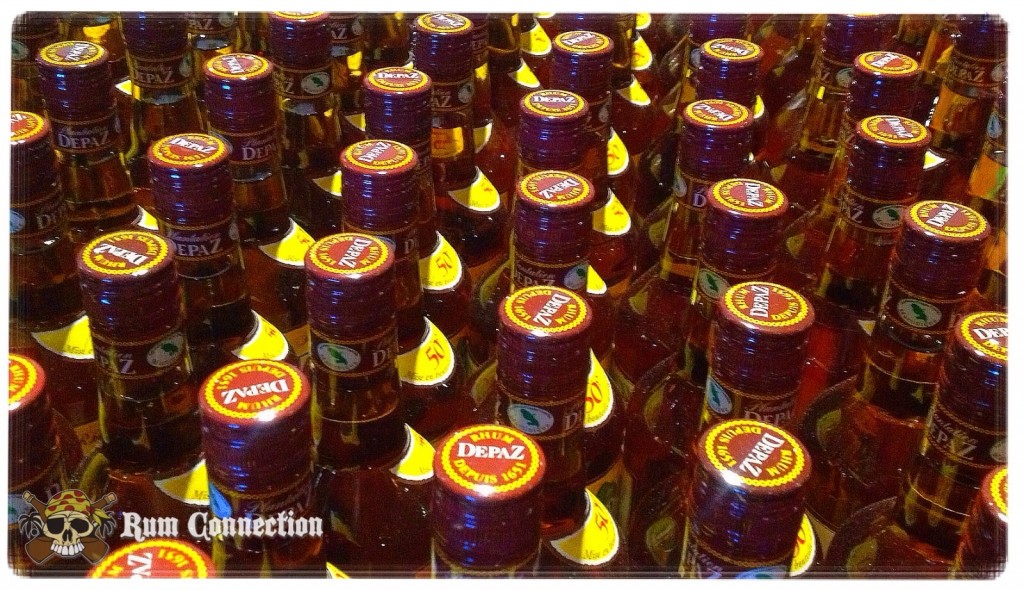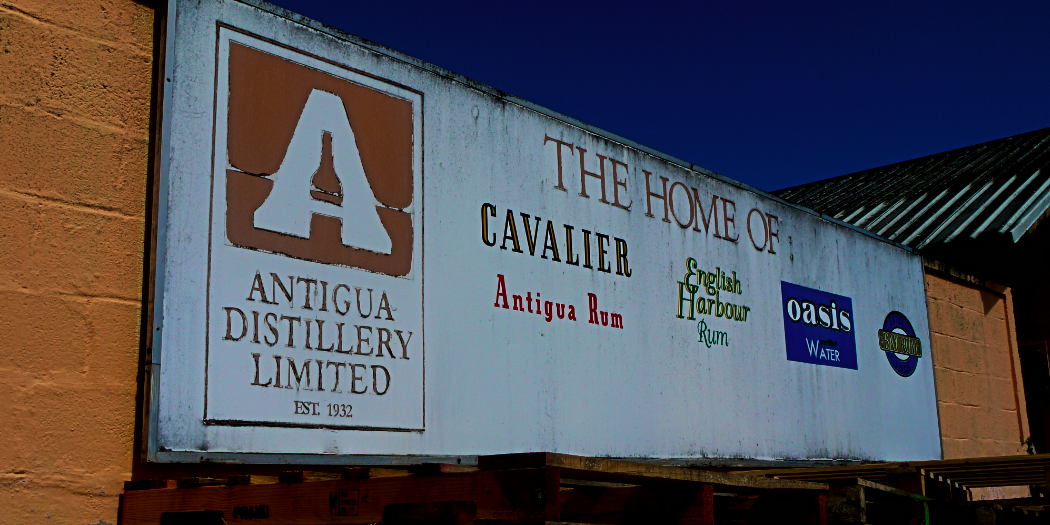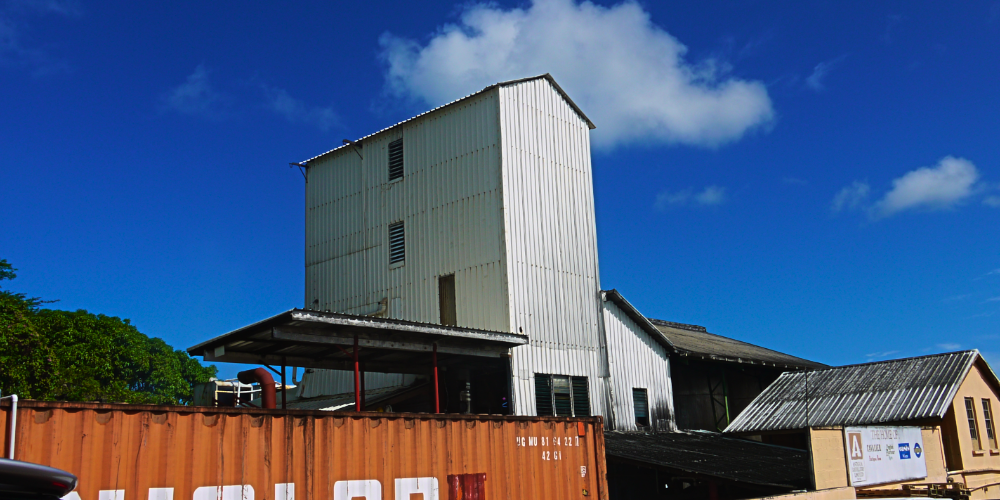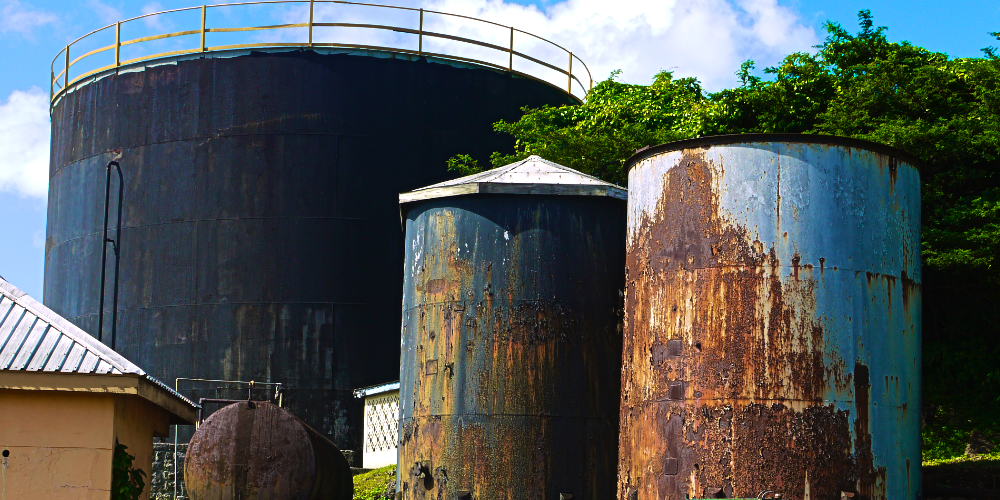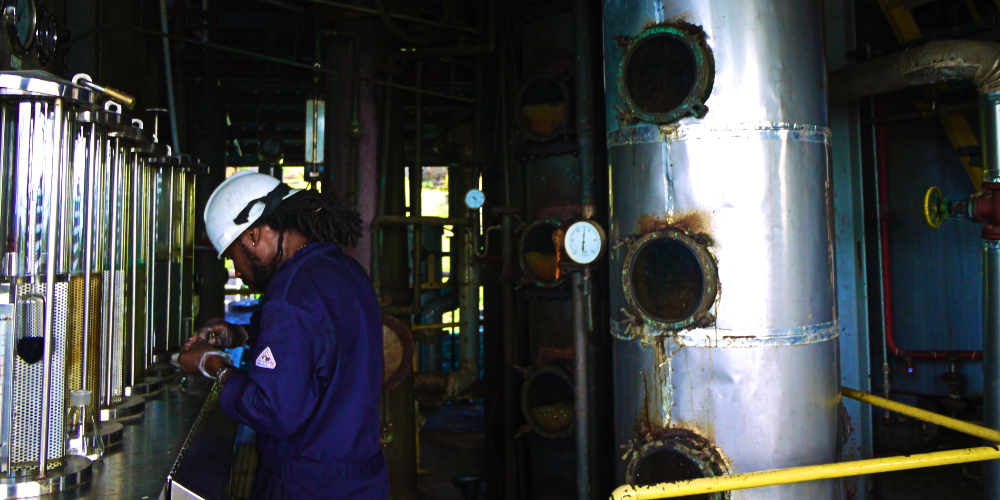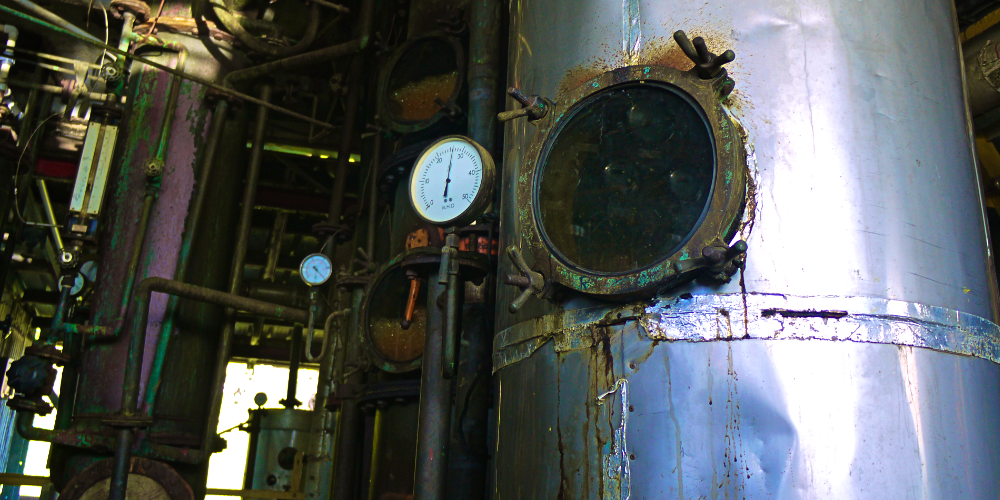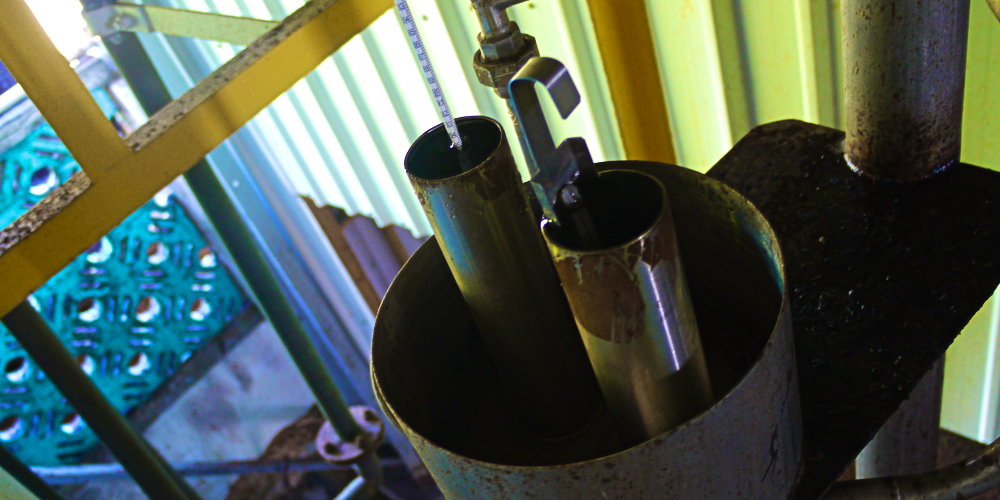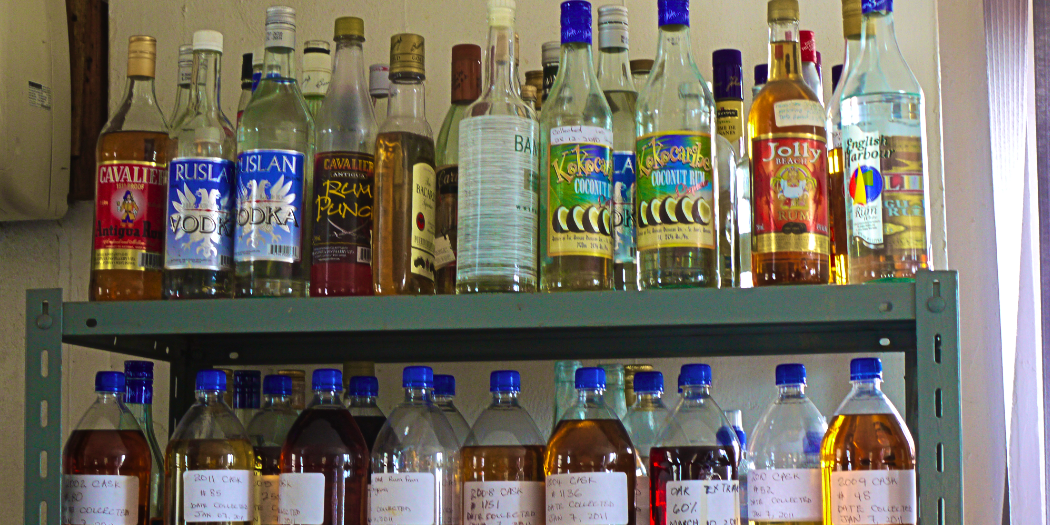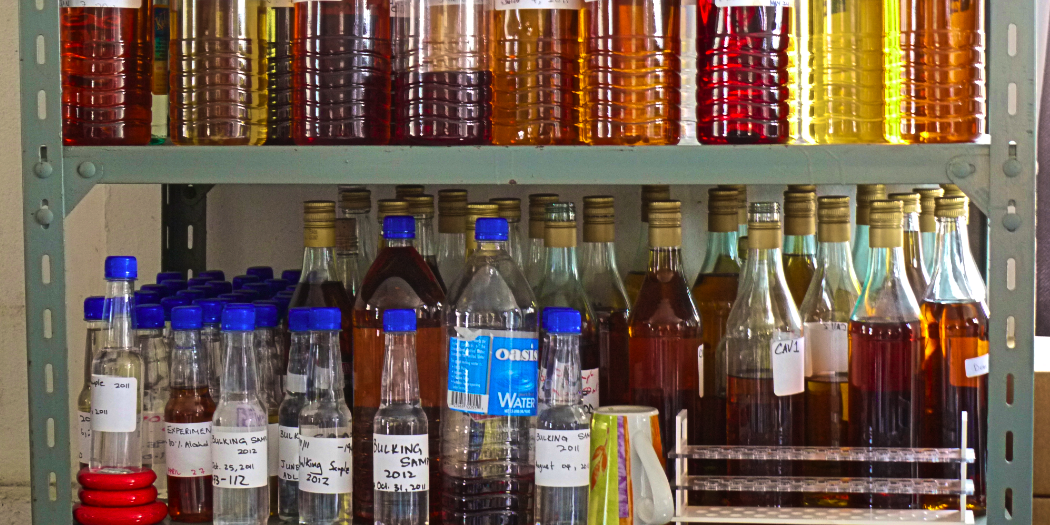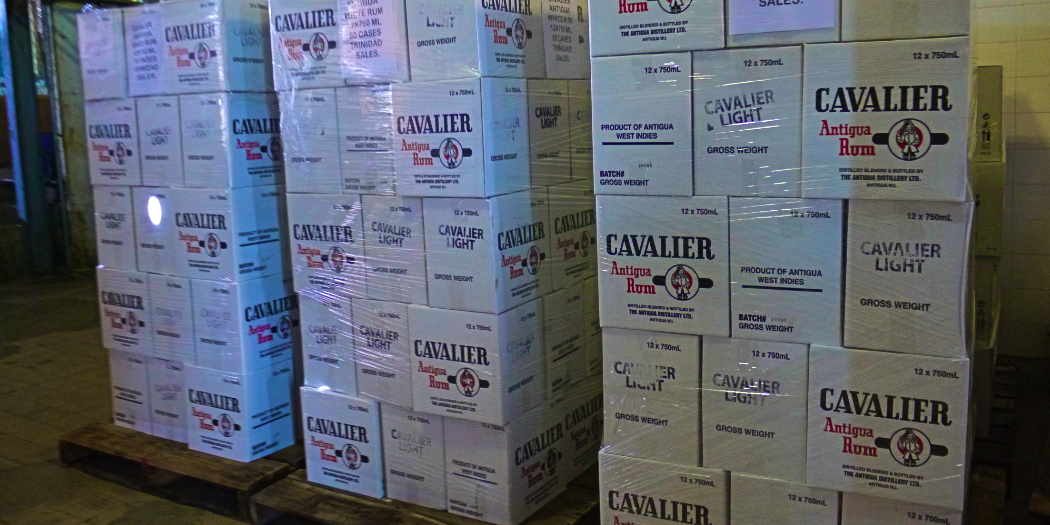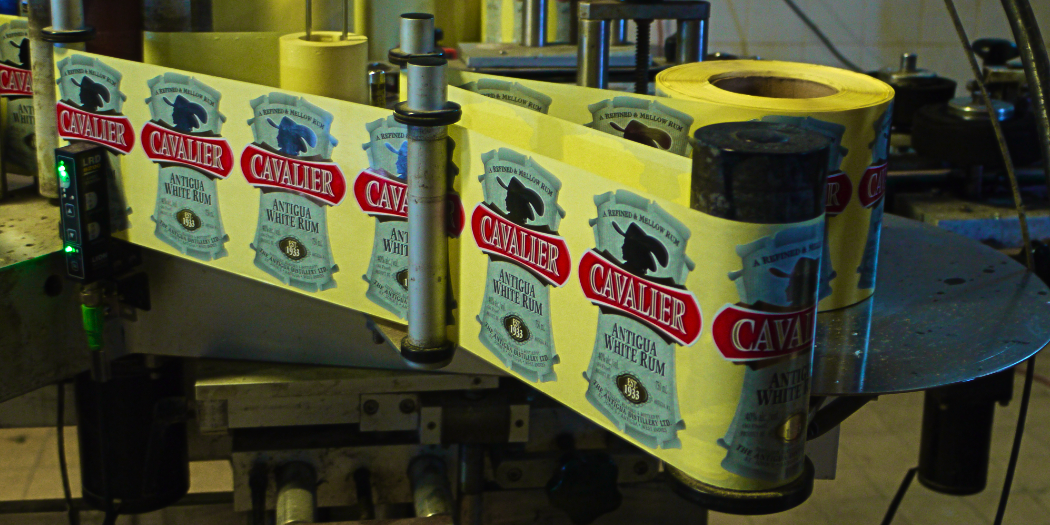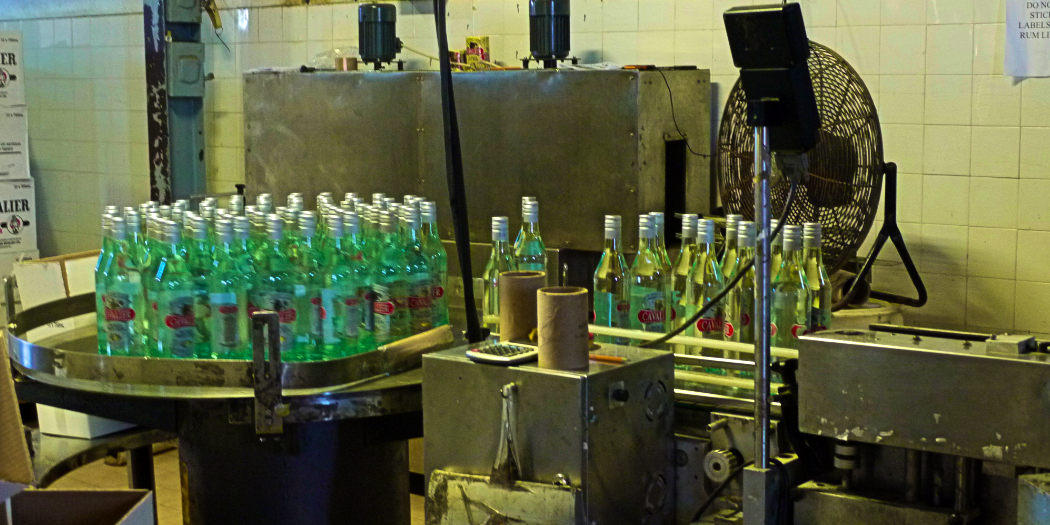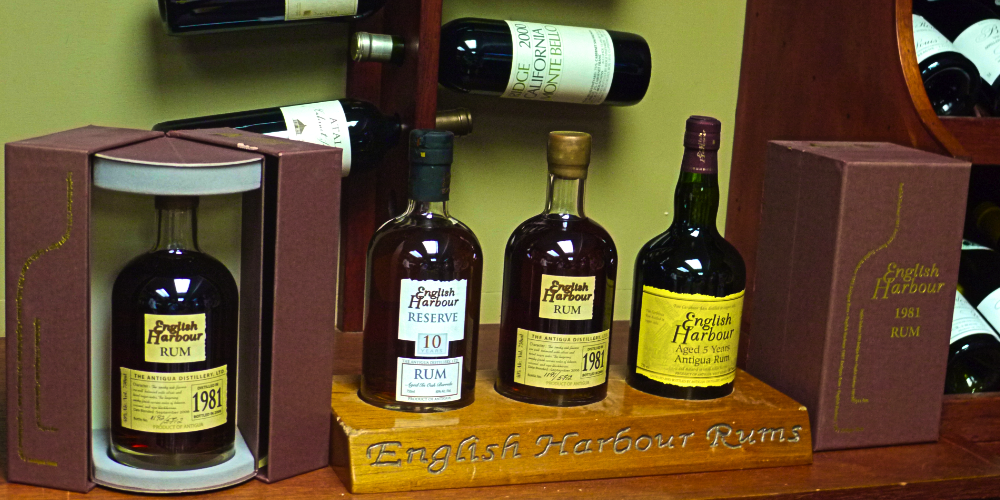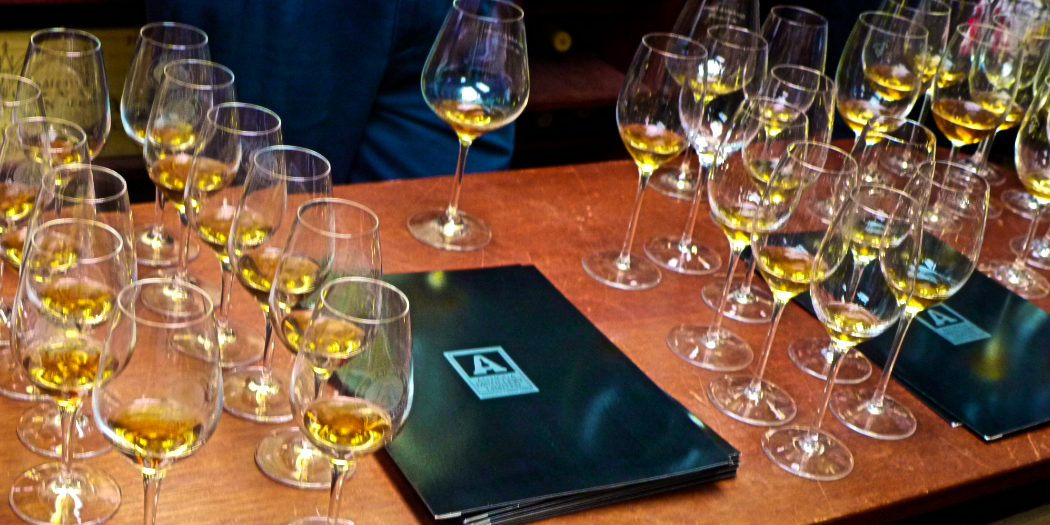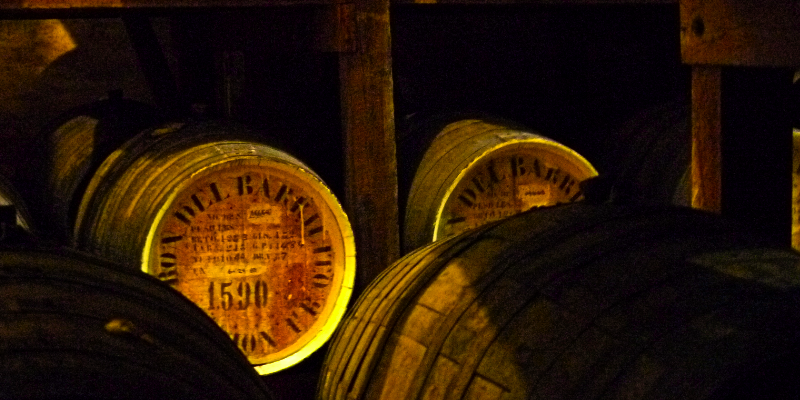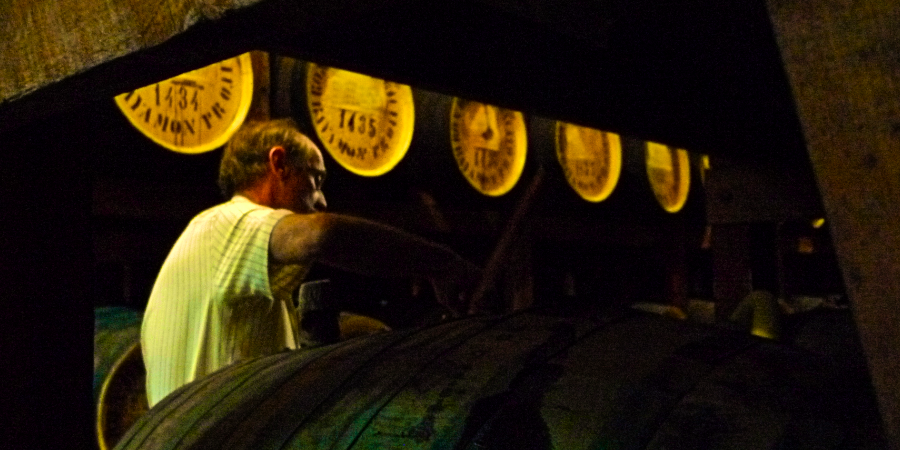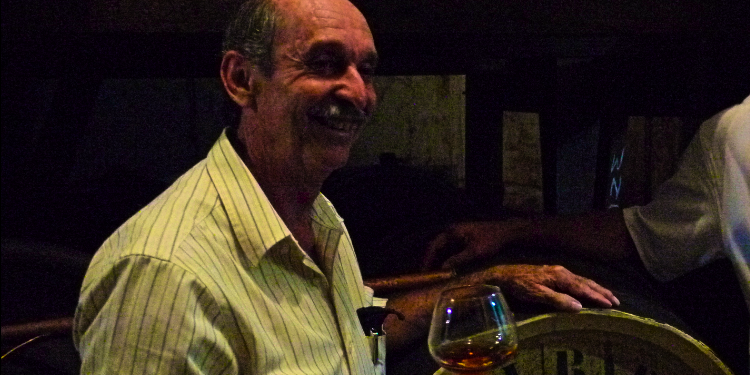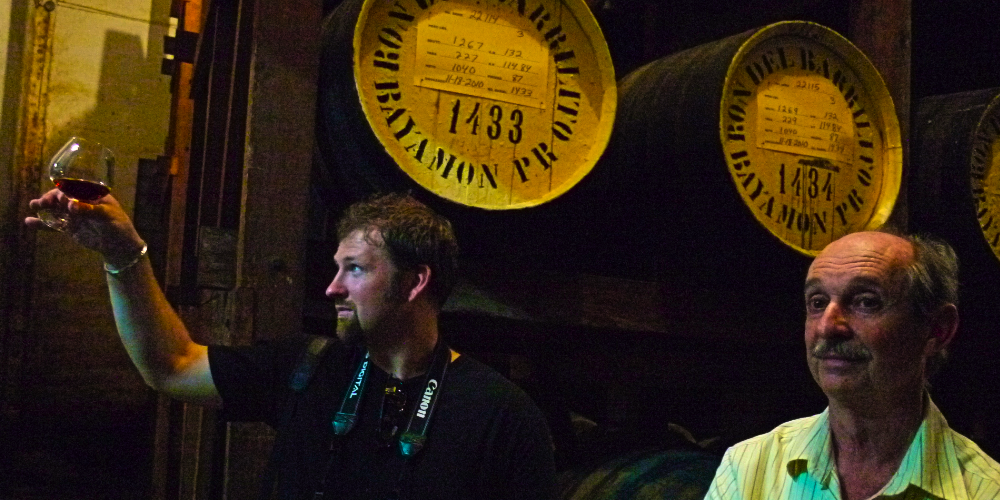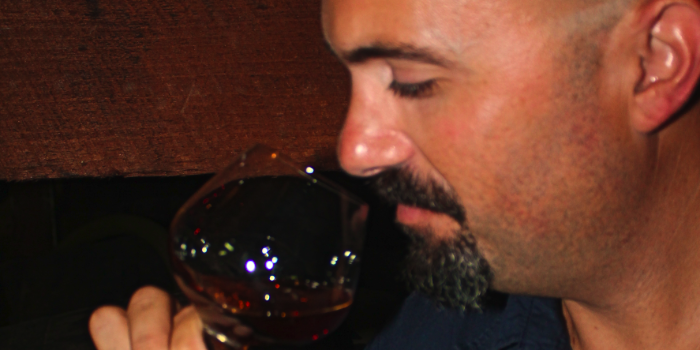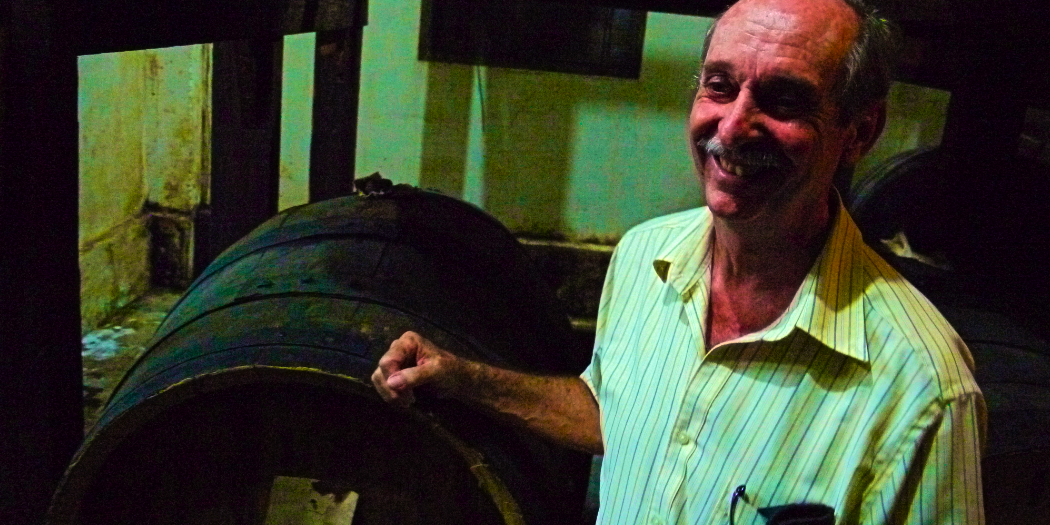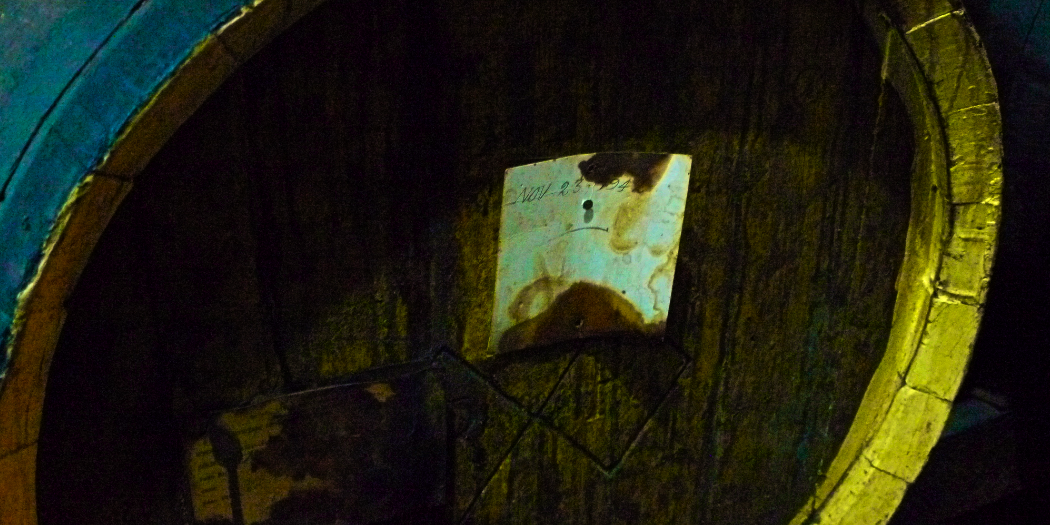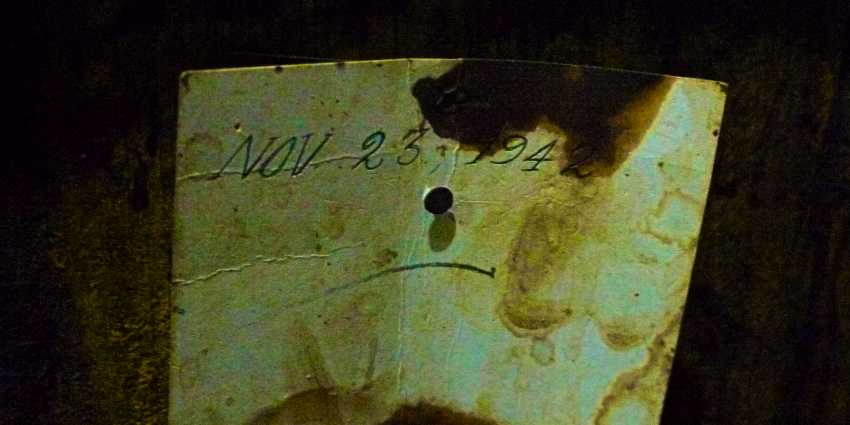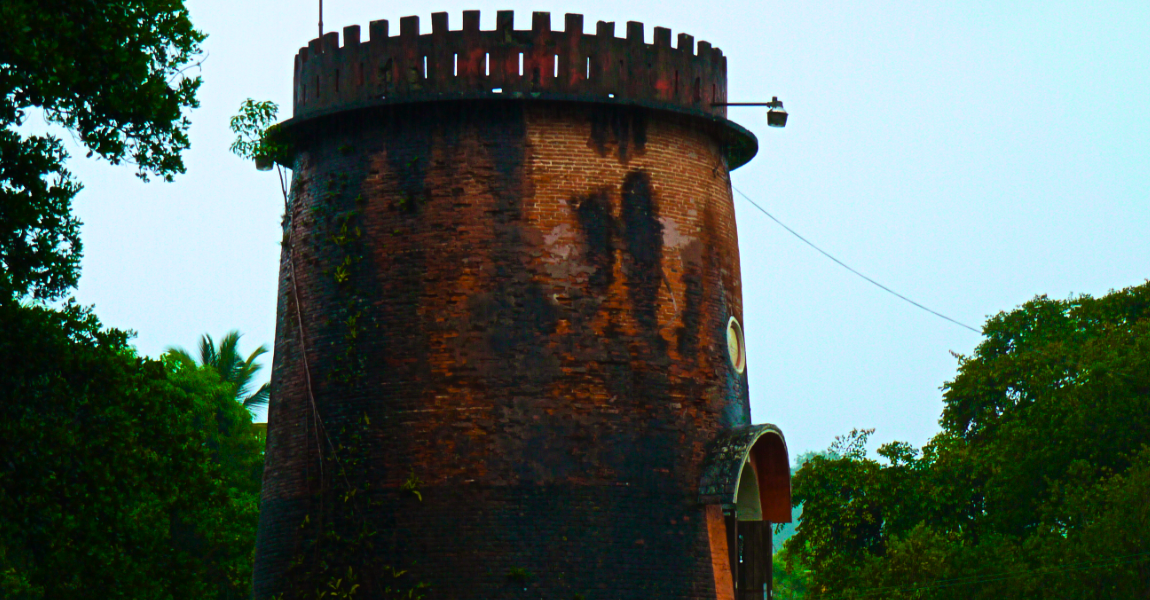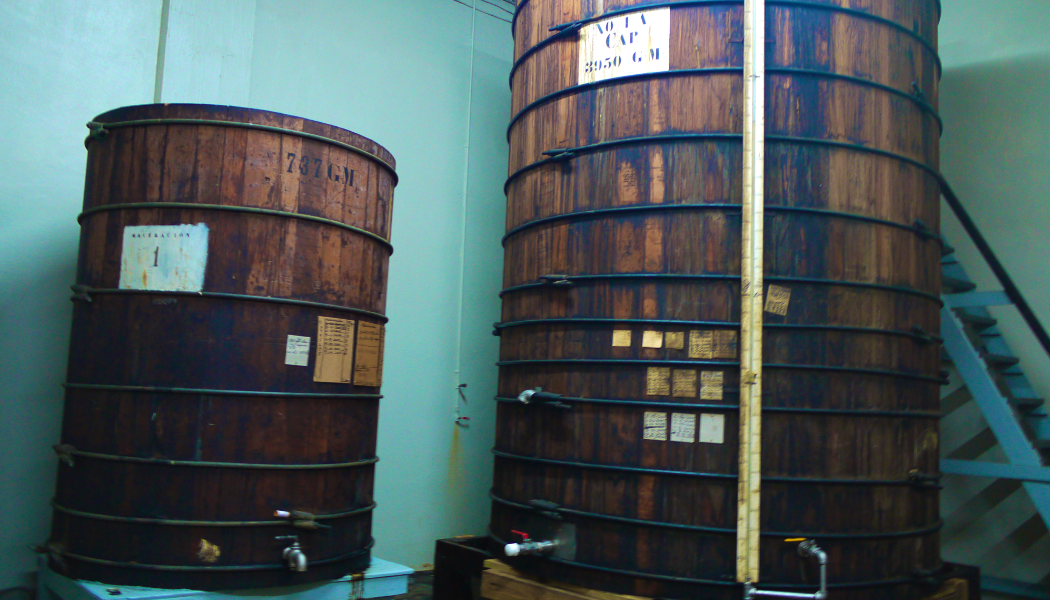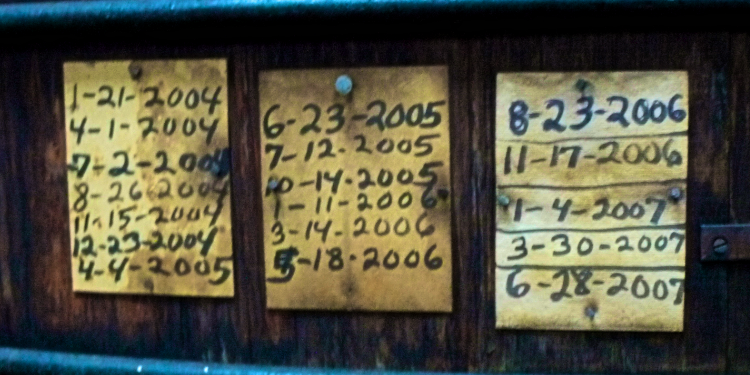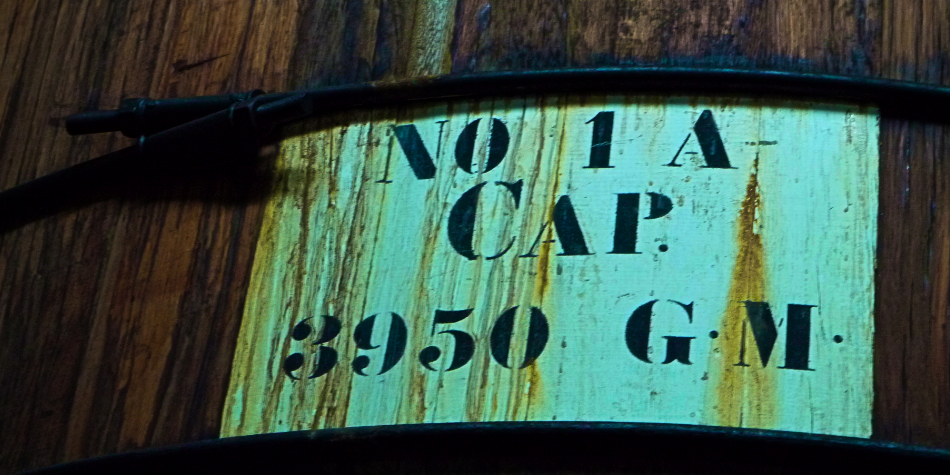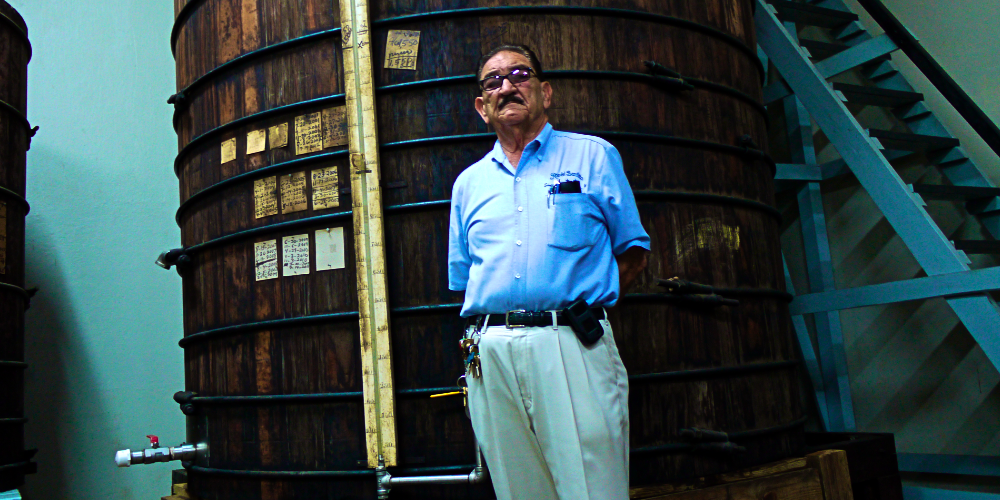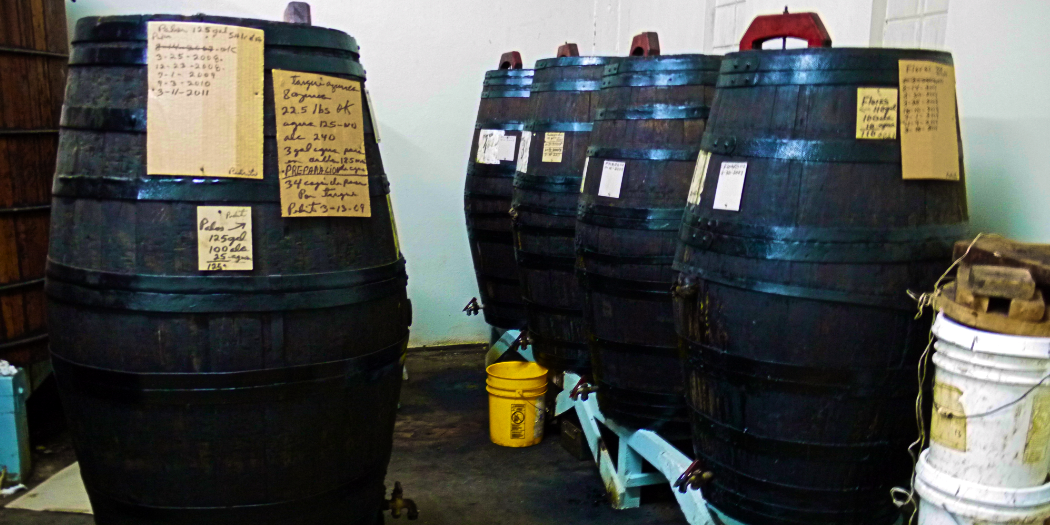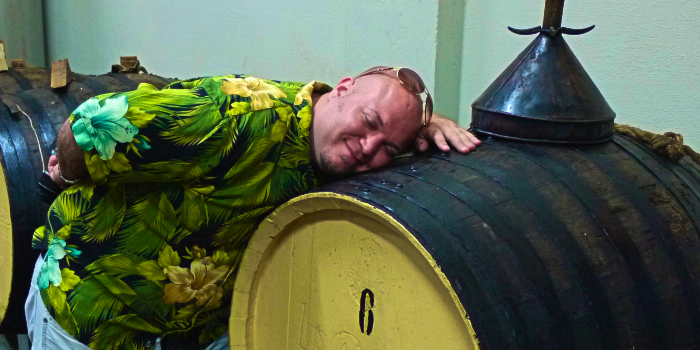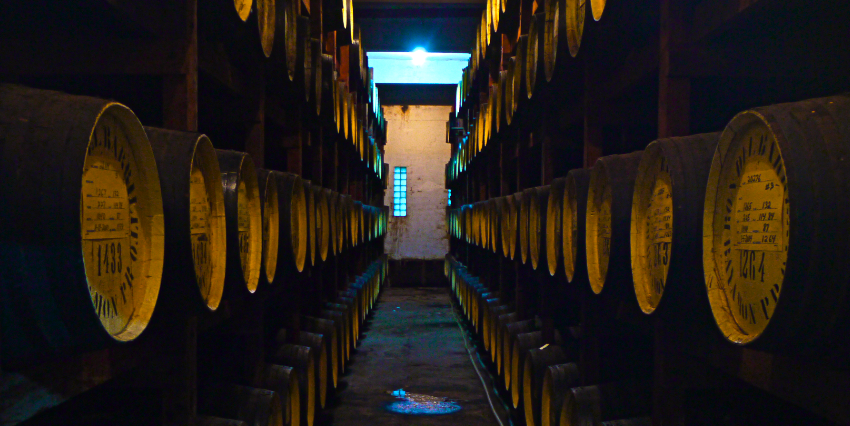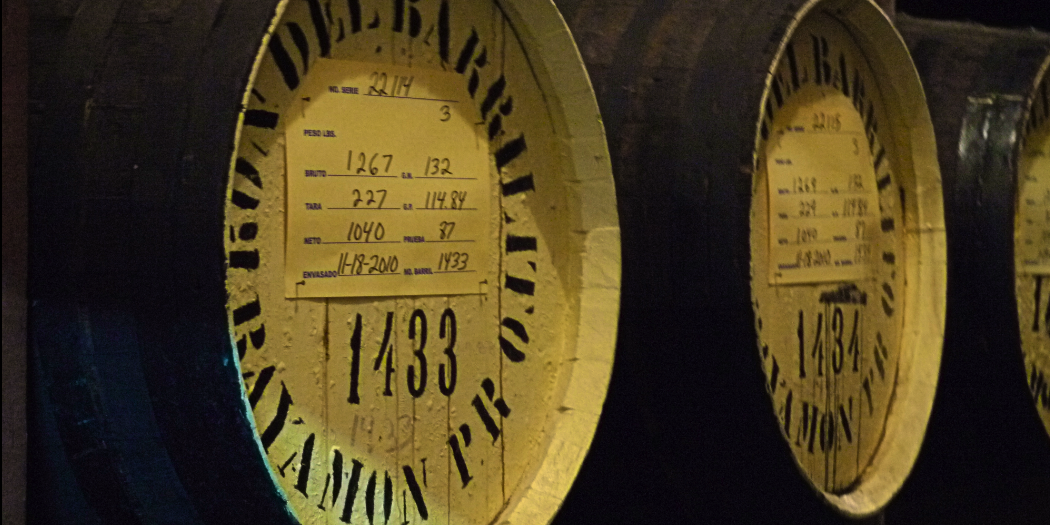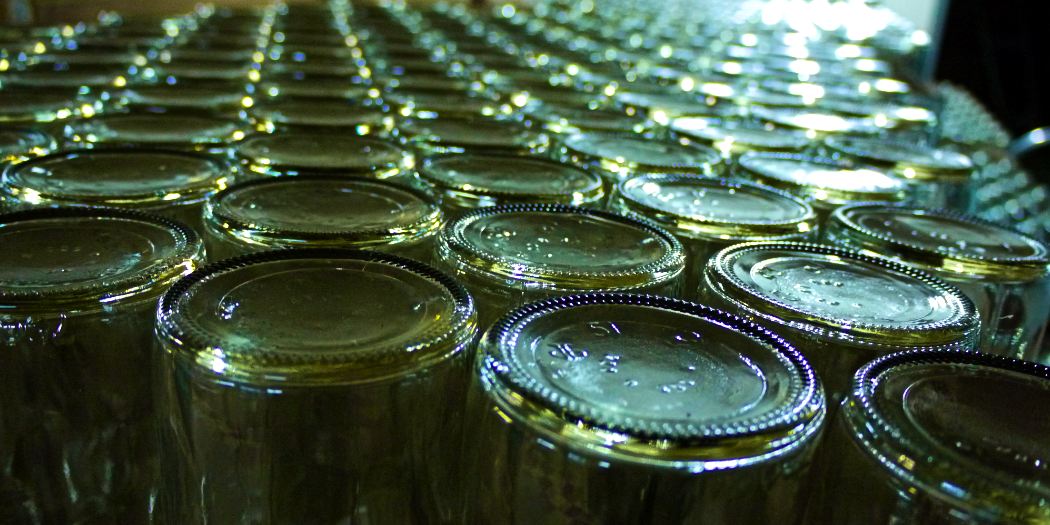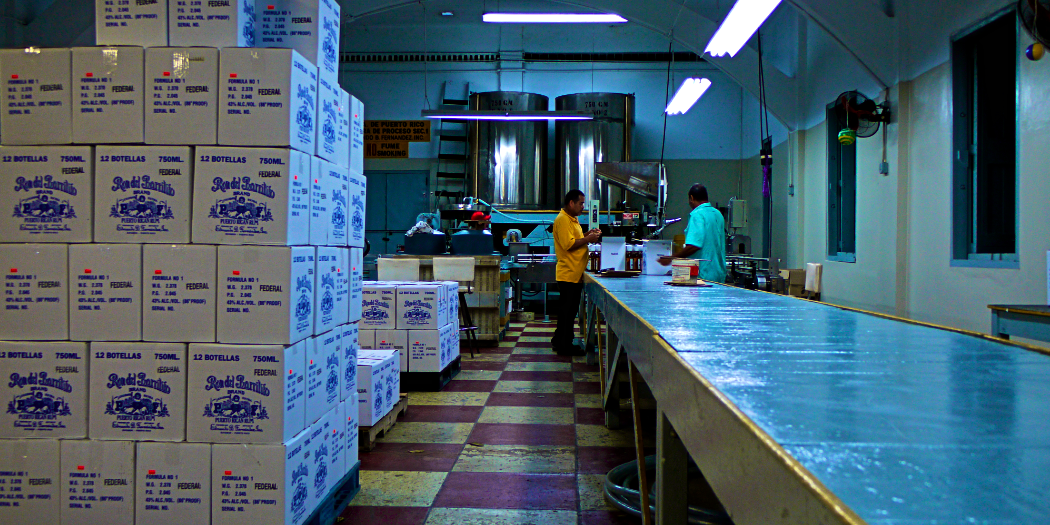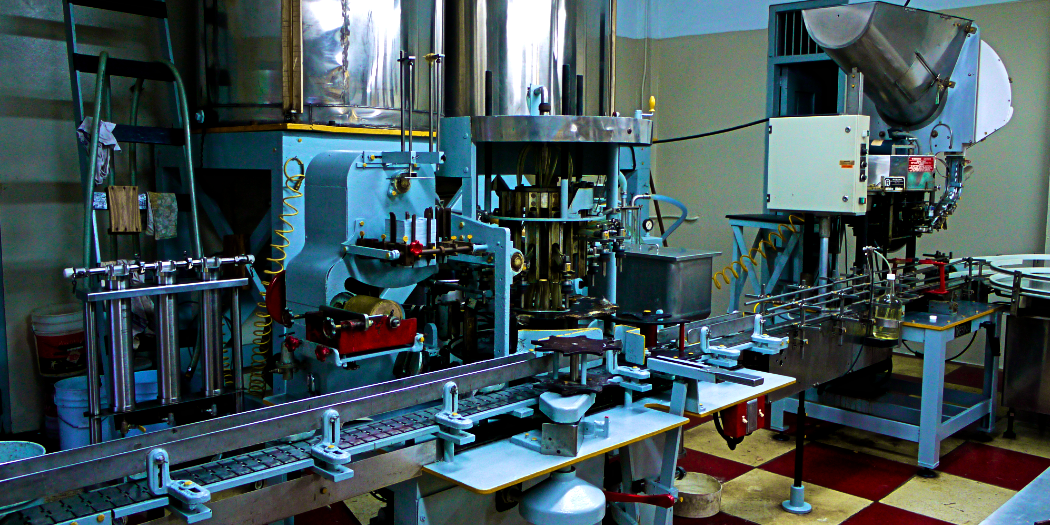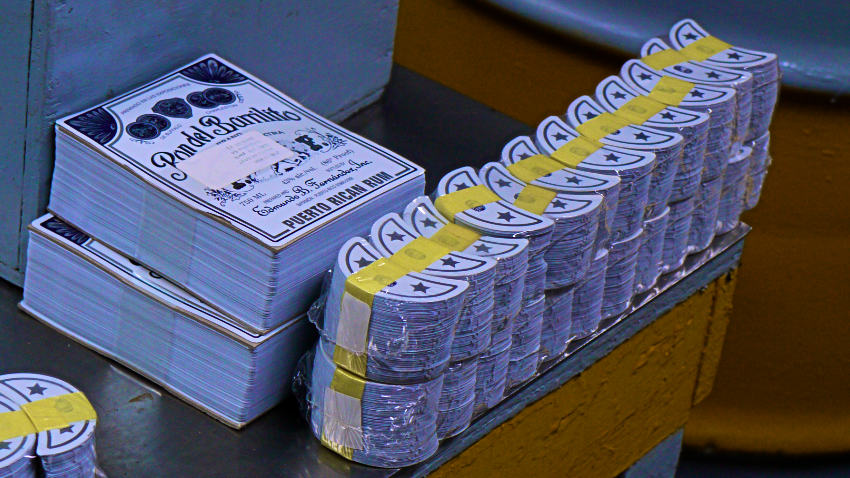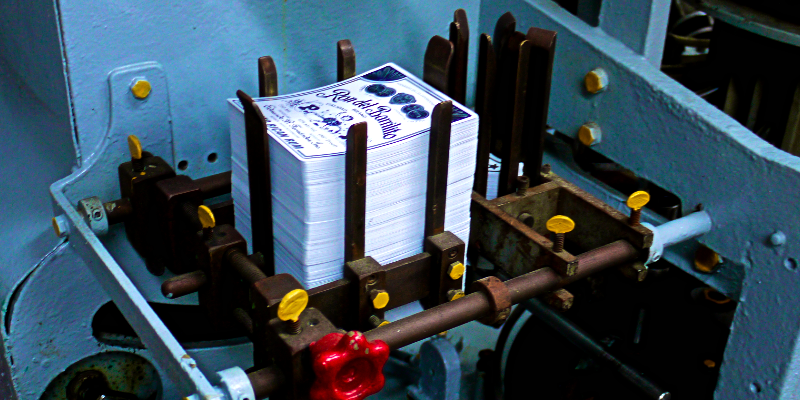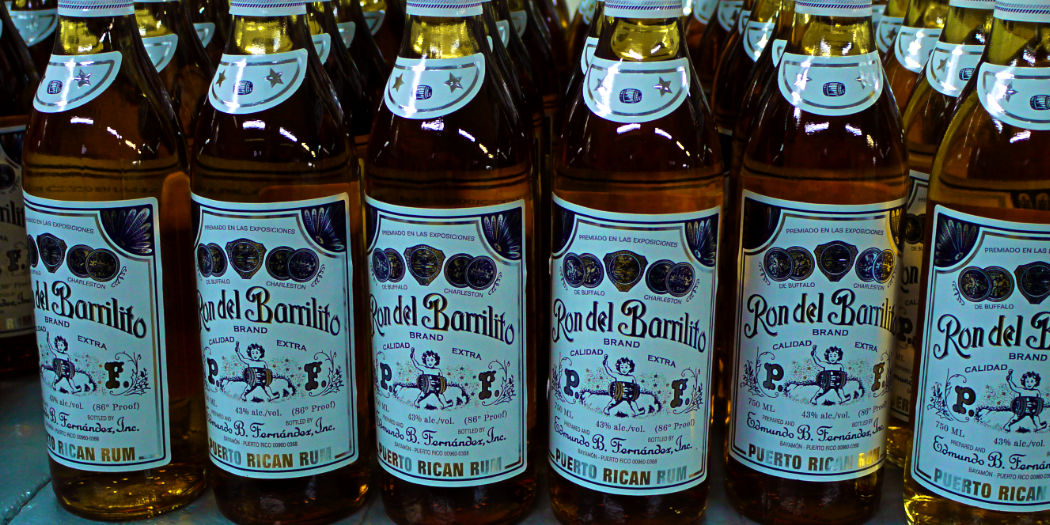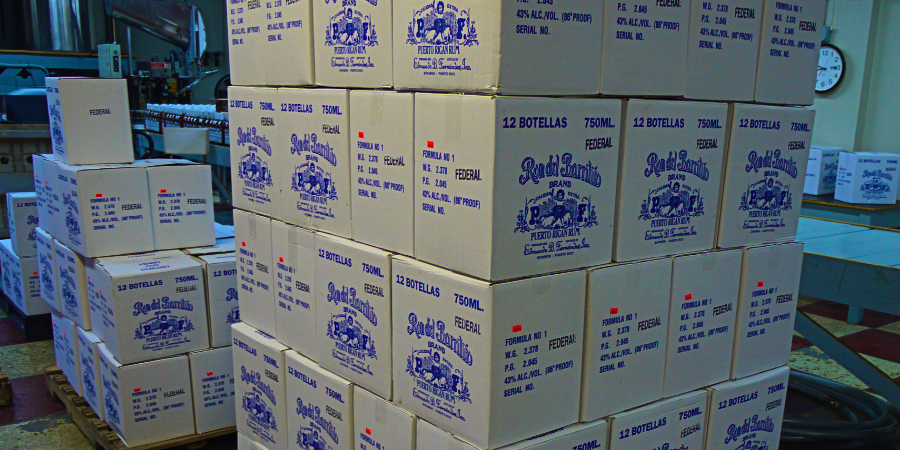St. Nicholas Abbey Rum tells their story with a beautifully produced video. Check it out.
Touring Depaz
The Martinique rum tour continues with a stop at one of the most well known distilleries on the island, Depaz.
________________________________________
Our tour of Martinique distilleries started once again bright and early as we navigated the rum bus through the busy streets of Fort de France and then up the island’s picturesque west coast to St. Pierre. On the agenda was a look at Depaz, one of the most respected distilleries on the island and one of its most popular tourist attractions.
A bottle of Rhum Depaz can be difficult to find in the US, so when we arrived at their state of the art facility I had no idea what to expect. We were greeted by Eric Lecoeur, GM at the distillery, and our tour quickly began with a history lesson about the brand.
The beautiful Depaz Estate sits at the base of Martinique’s tallest mountain, Mount Pelee. The origins of the property date all the way back to 1650 when Martinique’s first govenor built the original chateau. It was later acquired by the Depaz family and a sugar manufacturing plant and distillery were constructed. In 1903 a devastating volcanic blast from Mount Pelee killed nearly everyone in the town of St. Pierre and leveled every structure including the estate. In 1917, Victor Depaz returned to Martinique to rebuild the chateau, distillery and the good name of the brand.
Blue Cane, which is known as the best, most flavorful variety of sugarcane, was planted on the property. The stubborn crop grew well in the fertile volcanic soil and distinct micro-climate of northwest Martinique. The quality of the rhum was quickly revered as among the best on the island and gained the Depaz brand a much deserved reputation once again.
Today, Depaz distills their signature brand of rhum agricole as well as a line for Dillon, another admired local brand. Blue Cane remains a big factor in their signature flavor profile and more than a thousand hectares of the specialty sugarcane is planted on Depaz land. It is harvested in the spring when its sugar content is highest, then crushed to extract the juice and allowed to ferment for 48 hours until the wash is roughly 6%abv.
The distillery is equipped with three column stills, two for the Depaz line of rhums and one exclusively for the Dillon brand. Once it is distilled, the rhum is aged in French oak barrels, blended and bottled on premises. Unfortunately, a fire in 1988 destroyed all of their aged rhum stock, but they have already assembled an impressive collection of nearly 5000 barrels that are resting in rebuilt aging warehouses.
Rhums by Depaz are very well known throughout the world and are widely available in Europe. Unfortunately, many of their high end offerings are only distributed in Martinique and France. They are definitely worth seeking out, so if you happen to see a bottle on the shelf of your local liquor shop, be sure to snatch it up. If you want to score one of their more interesting offerings, you’ll just have to pay them a visit in Martinique.
Cheers!
Antigua Distillery Ltd.
How about a tour of Antigua Distillery Limited and a visit to their tasting room for a sample of the English Harbour Rums. Come along.
_______________________________________________________
We pulled slowly into port at St. John’s, Antigua and waited anxiously for another great day of distillery touring and rum drinking. We all knew that this day would be special. We were about to tour Antigua Distillery Limited (ADL), makers of the famous English Harbour Rums and a place that the general public doesn’t normally have access to.
We load into a small, hot, overcrowded mini-bus and we all grumble as we roll slowly through the morning traffic. We anticipate a long, uncomfortable ride to the distillery, but we’re pleasantly surprised when we arrive at the front gate of an industrial site no more than 5 minutes later. The sign reads “Antigua Distillery Limited.” This is it!!
We’re met out front by Anthony Bento, Managing Director of ADL. He welcomes us and describes the interesting history of the facility. Like most islands in the Caribbean, Antigua once had a plethora of sugar plantations and each had their own brand of rum. Estate rum production decreased in the early 20th century and rum shops took over the tradition. In 1934 several of these shops joined forces and developed Antigua Distillery Limited.
Over the years, the new company acquired several estates and a sugar factory. Their own unique, high quality molasses gave their rum a distinct taste and their first official brand, Cavalier, was launched in the early 1950s. Cavalier remains a popular local label on the island, but today ADL is best known for their premium line of English Harbour Rums.
After donning hard hats and hair nets our tour of the distillery began. Following visits to several tourist-friendly sites, it was interesting to see how this one worked, a plant that is admittedly not prepared for tours. We walked single file on steel walkways through tight corridors and passageways to view the fermentation and distillation areas.
One of the more interesting aspects of the plant is their unusual column still. Because of height restrictions, it is stacked in segments, four sections wide, but operates the same as a traditional set up. It is a one-of-a kind piece and shows just a bit of the innovation of everyone involved in this distillery.
We made a brief pass through the rum lab where new blends are designed and current products are tested for quality control. We continued on to the bottling area which consists of a very simple and efficient line that was running full blast with just two employees manning the operation.
We finally congregated at an offsite tasting room where we had a chance to sample all three rums from the English Harbour line. The 5 and 10 year aged varieties are amazing, but the 1981 vintage blew everyone’s mind. At $225us, this is certainly a bottle of rum that belongs in the super-premium category, but our crew saw it as a worthy investment and bought nearly every bottle they had in stock.
English Harbour 5 Year has long been a favorite sipper at Rum Connection headquarters and it was a pleasure seeing where it is made. ADL is an extremely understated distillery. They are low on the usual tourist glitz and glam but heavy on what counts – consistently making wonderful rum.
Thanks to all of our new friends in beautiful Antigua. We will definitely be back to swim in your blue waters, mingle with your friendly people and, of course, drink more of your outstanding rum. Cheers!!
In Search of Barrilito – Pt. 2
Our tour continued back in one of the aging warehouses where we looked at barrels that dated back thirty, forty and sometimes even fifty years. We browsed the shelves and admired what was almost a museum of aged rum. It smelled wonderful.
Manuel gathered us around a fat barrel that sat confidently on the second level of the large wooden rack and asked us if we would like a sample. The date on this particular barrel was 1982 and we all shook our heads in agreement, we would absolutely love to try this 29 year old rum.
Two snifters appeared, a long cylindrical tube was inserted into the barrel and a healthy amount of rum was extracted and poured slowly into each glass. We each smelled the sweet aroma of this antique rum and then took a small sip – absoluetly wonderful. We agreed that they should bottle it, straight from the barrel, even if it was in small quantities.
As Tropical Storm Emily beat on the metal roof above, we sat there with our host, among the racks of aging barrels and enjoyed a 29 year old sample of Barrilito. A rum that few people have ever had the opportunity to try. It was one of the best drinking sessions I’ve ever been a part of.
Our time at Barrilito was drawing short when someone from our group asked Manuel about the Freedom Barrel. This is legend among the rum drinking community and either discussed with curiosity or skepticism. The lore is that a single barrel of Barrilito rum was filled by Fernando and Manuel’s father in 1942 and left to age until Puerto Rico gained independence. Upon that day, the barrel is to be brought to the town square of Bayamon and sampled by everyone who is there to celebrate.
I think our group was bit skeptical that such a barrel existed, but when asked, Manuel escorted us through a large metal doorway and into yet another aging room. This was where some of their oldest rum was resting. As we entered the room Manuel pointed to the very first barrel. It looked slightly different and more worn than the others with stains at every seam where the angels had surely gathered their share over the years. Tacked to the front was a piece of weathered paper. It read Nov 23, 1942. The Freedom Barrel exists! As for tasting it, well, we’ll have to wait for Puerto Rican independence.
We finally bid farewell to our new friends and braved the tropical weather outside. We came away with bellies full of good spirits, boxes of rum and tshirts, but more importantly, new knowledge and respect for the Barrilito brand and Fernandez family tradition of making rum. Thanks to the Fernandez brothers for a wonderful tour and a look into their very unique corner of Puerto Rican rum culture. Cheers, fellas!!
In Search of Ron de Barrilito – Pt. 1
One of our favorite Puerto Rican rum scene stops is in the little town of Bayamon at the aging and blending facility of Ron del Barrilito.
______________________________________________________
Ron del Barrilito is a small brand, but one with a lot of history. The Fernandez family has owned the land where the facility is located for more than 200 years. In the early 1800’s it served as a sugar plantation and small amounts of rum were being produced there from the very beginning. Back then, rum was strictly made for their family and friends.
In 1827 a large windmill was constructed on the property to assist in crushing juice from sugar cane, but it wasn’t until nearly 1880 that the Fernandez family imported a European still and “officially” entered the rum business. Three generations of rum producing has passed and the brand is going strong, has been efficiently streamlined and focused on business.
Our hosts, Fernando and Manuel Fernandez, greet us through the heavy morning rain. We say our pleasantries and they tell us more about their unique production process. Today, all of their base rum is sourced from Bacardi and delivered to storage tanks at Barrilito in large tanker trucks. It is then transferred to wooden vats where it is blended with 10 secret ingredients, allowed to aerate and transferred to 130 gallon sherry barrels. Then it is allowed to rest in one of four large aging rooms for a minimum of two years.
Once the rum is aged properly it is blended precisely to either 2 Star or 3 Star specification and transferred to large stainless steel containers above their modest bottling line. Like most of the operation at Barrilito, the bottling and packaging area is very simple and efficient. A dated bottler and labeler are operated by a crew of two and the Fernandez brothers pitch in whenever necessary.
On the day of our visit, boxes of 2 Star rum were being filled for a shipment that was due to be picked up later in the day. The process was in strong contrast to some of the super-automated setups that we’ve seen, but we all agree that the human aspect of this line along with attention to detail could not be beat.
Tune in tomorrow for more details about our visit to Ron del Barrilito. Hint: we get a chance to taste vintage rum directly out of the cask and discover whether the Freedom Barrel really exists.
